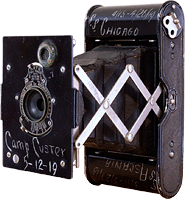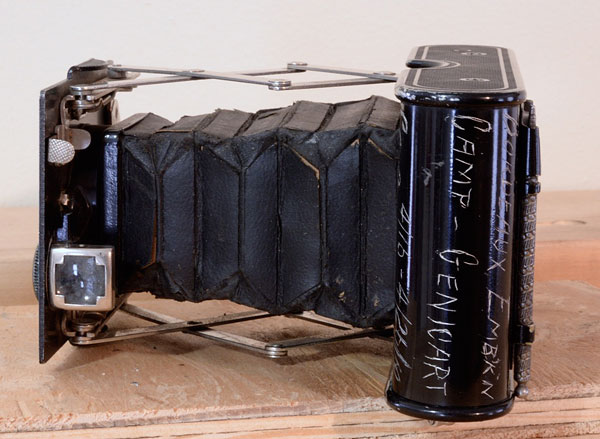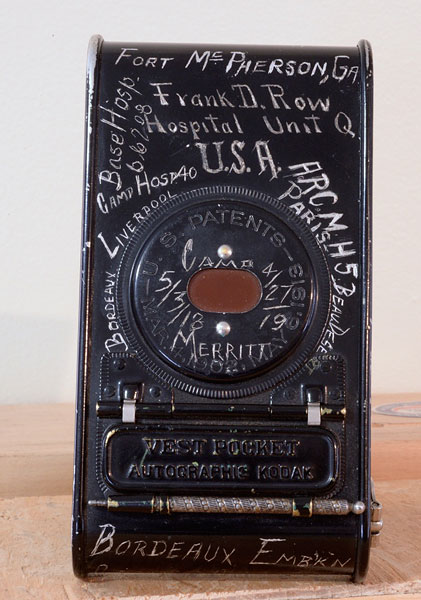Echoes of the past: Battle-worn Kodak camera tells us of its travels, and the man who once owned it
posted Monday, May 5, 2014 at 4:10 PM EDT

They might vary in shape, size, and the way they function, but almost every true photographer's camera has one thing in common: a plethora of little chips, scratches and dents. These aren't defects, we tell ourselves. They add to our much-loved cameras' character. These are no shelf queens: We got out there, and we really used them. The dings in the finish are just a testament to that fact. Some manufacturers consciously play upon this sentiment, calling attention to the way that their cameras wear over time, and making a selling point of the aging process.
In a way, those surface blemishes tell a story of where our cameras have been, and what they've done for us along the way. But sometimes, they tell that story more literally. That's the case with a camera purchased recently by Chuck Miller, writer and photographer for Albany, New York's Times Union newspaper. While browsing eBay, Miller spotted an aged Vest Pocket Autographic camera -- an iconic Kodak design produced from 1912 to 1926 -- and decided to buy it, doubtless attracted by the markings scratched into its body by a former owner.

The crude inscriptions start off simply enough with a name, one Frank D. Row. But as you look a little closer, they become more intriguing. This was more than just a simple proof of ownership: By scraping away the paint, one letter at a time, Row was documenting his life -- and that of his camera. Place names appear: Paris, Liverpool, Bordeaux. Dates, too. Names of hospitals and camps, even a ship. But what do they all mean?
Miller started researching, and with a little work, he teased out the story contained within each marking. This little Kodak, like so many of its fellow Vest Pocket cameras, had documented life in the midst of war. No small war, either, but the Great War -- the first war to span the globe. The war we now call World War I. And although its film, its photos, its life's blood have long scattered, this well-worn, much-loved Kodak still has more to tell about its life, and that of its owner.

It makes for an extremely interesting read. Hop on over to the Times Union for the rest of the story in Miller's blog post, "The Camera that saw the Great War."